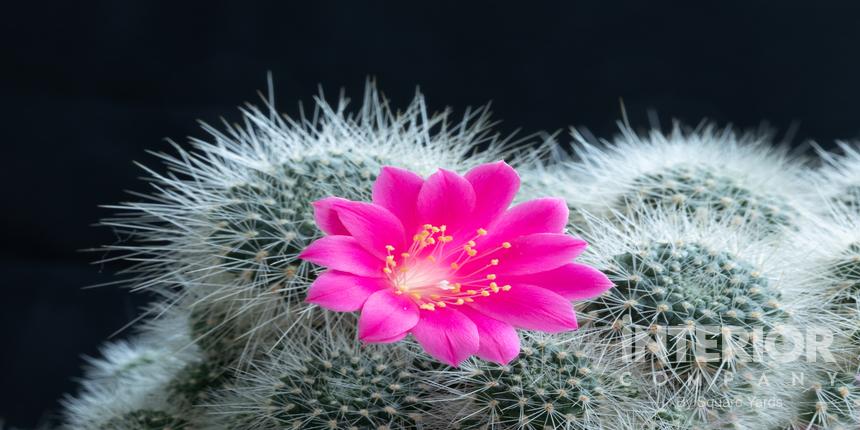- Kitchens
- Design Ideas
- Cities
- Trends
- Guides
- Price Calculators
- Our PortfolioNEW
- More
- Home
- Trends
- Furniture And Decor
- Indoor Plants
- Rebutia Cactus Plants Indp
How to Grow Rebutia Cactus - Crown Cacti
Commonly known as ‘Crown cacti’, the Rebutia genus consists of some of the renowned & easy-growing cacti, making them suitable for a perfect start. Named after a French Cactus grower, Monsieur P. Rebut, such plants are regional to high altitude in the South American region of Argentina & Bolivia, where they naturally grow in the hills.
Table of Content
The abundance of flowers leads in, people usually calling it orange crown cactus/ flame crown. As with most cacti, it does not need constant care. It grows smoothly if given ample amounts of light and warm air. Also, it produces an abundance of colorful petals covering its spherical growth. They have no distinctive ribs, but do have regularly arranged small tubercles. They are considered easy to grow and they may produce good quantity of seeds that germinate smoothly around the parent plant.
Some of the Renowned Diversities in the Rebutia Species Include:
Rebutia Pulvinosa

Rebutia pulvinosa is a sparsely spined and highly clustered plant, it quickly produces numerous ‘offsprings’ around it, offspring a low, thick & spreading pulvinus (cushions). The ribs are divided into spaced tubercles with 2 downward spirals wherein the stems are flattened, and have individual heads with a diameter of up to 3cm. The bright yellowish-orange flowers emerge with an amazing display in mid-season with a diameter ranging between 1.5-3 cm. Talking about the cultivation, they are quite compact growing cacti and are perfect for a bowl garden, where a miniaturized scape could be easily created with superb effect.
Rebutia Violaciflora

Rebutia violaciflora is an interesting variety which features golden-yellow spines, growing up to 25 mm in length and a yellow-green globular body which forms clumps. It is considered to be one of the morphological/local forms of Rebutia minuscula, but the differences in reality are very minimal. These are light-violet colored flower plants, and are almost always produced from selected self-pollinating strains. In natural populations, the color of flowers varies from red, purple and violet. The ribs are totally divided in flat, round, spiraled tubercles whereas the deep yellow-green colored stem is hemispherical in shape, having a diameter of less than 20mm usually.Their cultivation involves an easy, slow-growing process. The whole Rebutia violaciflora complex has beautiful flowers and the plants remain compact. Another advantage is that the plants are very cold hardy in Winter if kept dry.
Rebutia Minuscula

Rebutia minuscula is a small clumping cactus species, popular and extremely variable which has received numerous names such as Violet Crown Cactus, Red crown Cactus, Fire Crown Cactus etc. Having low and flat tubercles, this specie of cacti has bright to dull green stems, ranging between 4 to 6cm, in their respective diameter. Rebutia minuscula is quite different. The differences involves the spine formation and flowers color, however the size and number of spines is greatly affected by the conditions of culture, at a lower amount of light levels the spines are less numerous, delicate and white, whereas with strong solar radiation the spines are tougher with a yellowish tint. It grows pretty close to the ground and is a prolific bloomer!
Rebutia Mentosa

This category of Rebutia is a bit small, but eye-catchy. Their form is globular which usually takes shape of a pretty small clump. They smoothly produce flowers that are comparatively bigger to the body. The flowers have a funnel shape having floral tubes which curve skyward over the plant. They do not have ribs, but do have ofttimes arranged tubercles. The flowers are easy to grow and able to produce a good quantity of seeds that vegetate smoothly all around its parent plant.
Not just the ground, they can even be grown in suitable containers which directs to the fact that they can be included under the category of 'house grown plants' as well. It falls under the list of large-headed species where the main head ranges between 5-7cm in diameter. It is a relatively rapidly growing and easily flowering species.
Growth and Care about Rebutia Cactus (Crown Cacti)
Growing Rebutia Cactus
If you are willing to grow a Cacti, then the Rebutia won't give you any sort of a trouble. Like most of the cacti, it requires bright light & warm temperature. Also, if you are planning to add the Orange Grown cactus your garden/lawn, make sure that the temperature should not drop below 23 degrees F (-5 degrees Celsius ) in the season of winter. Although it can survive a frost and are also tolerable to low temperatures, the plant needs to be protected from hail and torrential rain. During Summer, the plant enjoys temperature over 70 degrees Fahrenheit (21°C).
Indoors, normal room temperature works for its growth. During the mid-summer, the cactus wouldn't grow much but resume its growth towards the end of season, when the weather cools down a bit. Watering too much or keeping at extremely high temperatures during winter might not let the Rubutia cactus in blooming the upcoming year. Most of the Rebutia Cacti grow in the conditions of partial shade or full sun. The most appropriate location for the plant indoors would definitely be near a sunny window.
Although it easily tolerates situations like extreme bright light or direct sun, but filtered sunlight & afternoon shade are highly appreciated. Extreme light encourages the Rebutia to flower and develop dense spines. However, if overexposed to extreme sunlight it may suffer from a sun scorch, precisely during the hottest part of summer.
Rebutia cacti can sometimes suffer from a rot, which happens to be a usual problem in this particular species. A severe rot would lead the cactus to die, so keep in mind to cultivate with cuttings before this iany sort of grooming and is therefore a low-maintenance plant.
Watering Rebutia Cactus
The Rebutia Cacti, has typical water requirements like many other cacti species. The watering process should be done with utmost caution, making sure that the soil is dried out between watering. Keep in mind that the plant must not be exposed to sitting water or prolonged dampness. Empty the tray once watered.
Although the Rebutia Cacti doesn't like much of water, it still needs some amount of moisture. In order to prevent the roots from getting damaged, water the plant regularly. Experts recommend to water Rebutia Cacti once a week especially during the hot summer period and occasionally in the winter season.
Planting Rebutia Cactus
Repotting the Rebutia cacti is best during the warm season. It occupies a relatively small pot easily and stays at a manageable size. However, it is suggested to repot annually to promote strength growth. After the cacti has reached the maximum potential size, repotting could be performed annually. Feeding needs to be suspended in winter so that the plant can rest.
Watering, after repotting isn't required so that the cactus gets time to adapt to its new growing conditions. This secures the broken roots from damaging the cactus. Before repotting this Rebutia Cacti, keep in mind that the soil should be dry. Removal of the old soil from the plant's roots should be done gently afterwards. Next, put the plant in a different/new pot and while you add new soil, spread out the roots. Initiate the watering process after some weeks & then continue with the same watering schedule.
Propagating Rebutia Cactus
Rebutia Cacti is such an amazing, low maintenance plant, therefore why just settle for one? Fortunately, propagating this plant is pretty easy and simple. There are 2 basic methods used by gardeners.
- From the seeds
- Offsets
The most convenient propagating method is from offsets. Once the Cacti have grown in to a decent size, carefully pull out the offsets and put them over a tissue/paper towel or wait for a callous to be formed over the surface, after a couple of days. Once you realize that the wound is being closed by the callus, put the new plant in to the callus with the most appropriate potting mix.
In order to propagate the Cacti from seeds, collect the seeds right after the flower is bloomed. In the initial phase of spring, scatter/spread the seeds over the soil mix, adding a layer of sand on top. Cover its container with a plastic/glass cover. Keep in mind to lift it frequently to allow the circulation of air. Once the seedlings start appearing, place them into bigger pots in an indoor sunny location, making sure to water the plant occasionally.
Ready for a home transformation?
Let our designers assist you!
Recent Posts
Related Category
- Balcony
- Bedroom
- Home Decor
- Living Room
- Outdoors



































